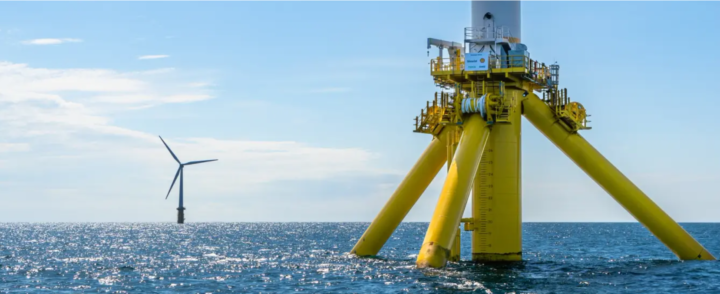Norway rides high-tech tailwind into floating offshore wind future
After giving birth to the industry over two decades ago, Norway continues to drive innovation in floating offshore wind, building an industry that is scalable, cost competitive and nature friendly.
In November 2022, Norway opened the world’s largest floating offshore wind farm, Hywind Tampen. This industry milestone is a natural outcome of Norway’s decades of offshore experience in harsh conditions and an unrivalled Norwegian supply industry.
“Norway has a competitive edge from its 60 years of experience in designing, installing and operating offshore facilities in extremely rough conditions,” says Eli Wærum Rognerud, Head of Strategic Export Initiatives at Innovation Norway.
Located 140 km off the Norwegian coast, Hywind Tampen is ideally located for tapping into the strong, stable winds far offshore, where 80 per cent of the best wind resources are found. Water depths ranging from 260m to 300m make floating wind the only wind power option here.
Reducing use of natural gas
When fully operational, the wind farm will generate nearly half of the world’s floating wind capacity. Behind this massive undertaking is Equinor, a broad international energy company in which the Norwegian government is the majority shareholder.
Before Hywind Tampen, Equinor built the world’s first floating wind turbine, Hywind Demo, and the world’s first floating wind farm, Hywind Scotland.
Hywind Tampen is the world’s first floating wind farm to provide renewable power to offshore oil and gas platforms. It will reduce the use of gas turbine power for the Snorre and Gullfaks fields, while offsetting 200 000 metric tons of CO2 emissions and 1 000 metric tons of NOx emissions per year.
Exploring larger turbines
Hywind Tampen is a testbed for floating wind, exploring the use of larger turbines, installation methods, simplified moorings, concrete substructures and integration between natural gas and wind power generation systems. This is an important step in industrialising solutions and reducing costs for future offshore wind power projects.
“We don’t need to pilot anymore; we need to scale up to bring costs down. If we do, floating wind can comprise a large part of the energy mix,” says Sonja Chirico Indrebø, VP of Floating Offshore Wind at Equinor.
Supporting Hywind Tampen and projects like it is Norway’s well-developed supply industry, covering all parts of the value chain from presurvey and site selection through installation and operations to decommissioning and end-of-life disposal.
Semar, for example, played a key role together with DOF Subsea in planning and executing the tow and hook-up of the Hywind Tampen wind turbines.
“We have highly skilled actors in offshore supply chains and marine activities, as well as world-class engineers who can tackle the difficult challenges of floating wind,” says Eli W. Rognerud.
Creating tailwinds for offshore wind
To illustrate, here are some exciting Norwegian innovations creating tailwinds for the industry.
Part of Norway’s green port movement, Windport’s ambition is to offer integrated port services with net-zero emission operations on Norway’s southern coast. Here, floating wind turbines can be fully assembled and then towed to their final destination in Norway, Scotland and elsewhere.
“Norway has ideal conditions for port infrastructure. In our fjords, we have deep waters, sheltered areas and access to large quay fronts that sit on solid rock. On the south coast, the sea has no ice in the winter, low tidal variations and no sand banks,” explains Turid Storhaug, CTO at Global Ocean Technology.
“Like Norway, the countries of Denmark, Germany and Scotland have massive plans to develop offshore wind, but a lack of suitable port infrastructure could hold them back. With Windport, we offer access to the entire North Sea area,” she adds.
Fred. Olsen 1848, on the other hand, takes a different approach to this challenge with its Mobile Port Solution. It has also developed a next-generation floating wind turbine foundation and an O&M solution that reduces the levelised cost of energy.
Source: Business Norway



